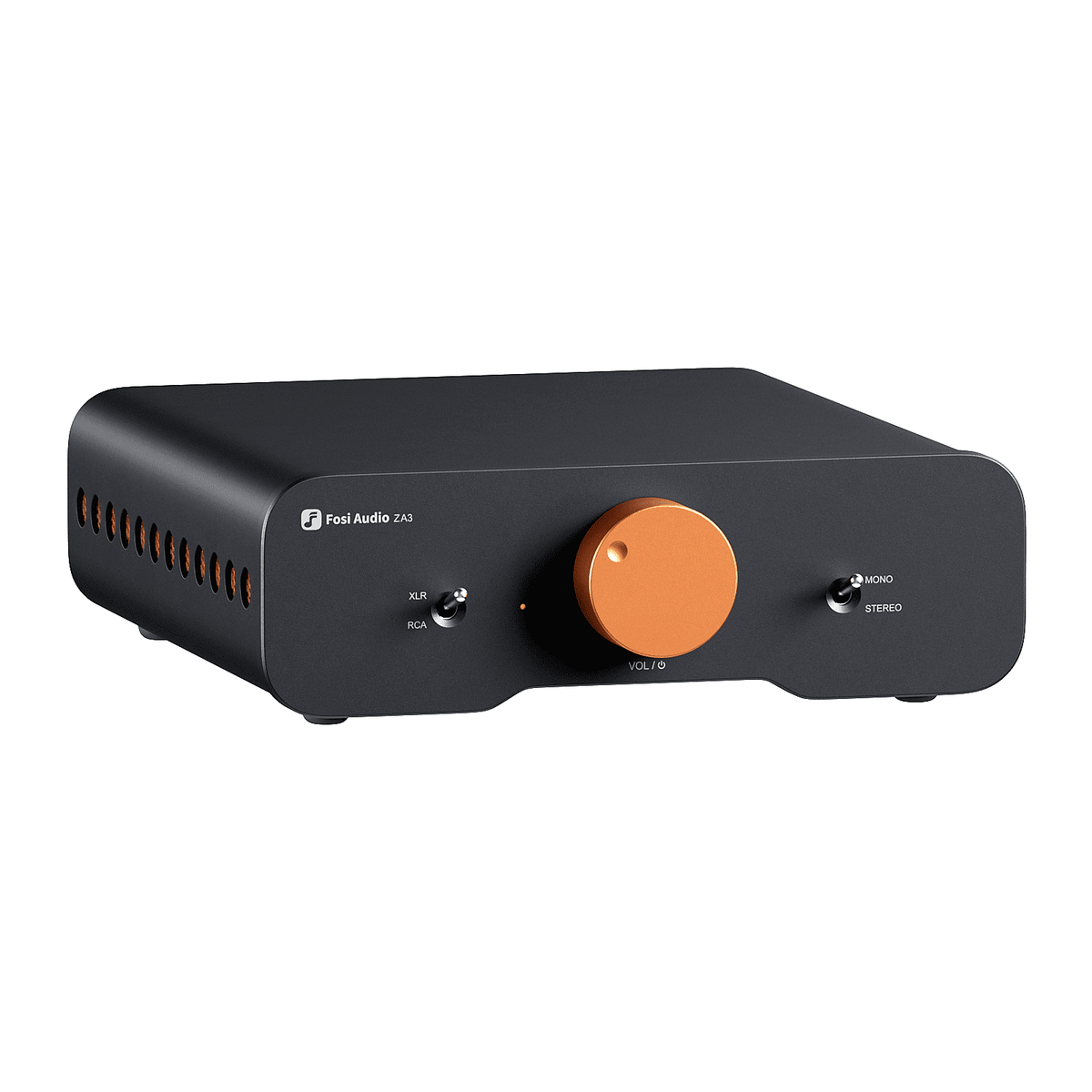This is a review and detailed measurements of the Fosi Audio ZA3 stereo amplifier with balanced XLR inputs. It was sent to me by the company and costs US $149.99 with 48 volt power supply.
View attachment 348770
The amplifier has really dressed up from its earlier origins of common enclosures in budget class amplifiers. It looks a lot more "beefy" and substantial. It also looks a lot better with nice series of holes on the sides where copper color is seen through it. Maybe due to these reasons the amplifier kept its cool for the entire test.
On controls, you push the volume control in to turn it on and off. Turning on causes an orange LED to light. Turning it off causes a delay in the light going out even though the output shuts off. Not an issue if you are listening to it but in testing, I am not so it was a bit confusing at first.
There is a misnamed "mono" vs "stereo" switch. Mono doesn't make both channels the same but rather, shuts off one channel allowing for more power in the channel that is left running. The other button is key in book which is support for balanced XLR input to help in avoiding ground loops:
View attachment 348772
The connectors are combo so you can either use XLR or 1/4 inch. There is still RCA inputs of course and support is provided for a filtered, and volume controlled subwoofer output. Finally we have trigger input so you can turn the amplifier on automatically if you power on your upstream product and it has trigger out, and vice versa.
You may have noticed that it has taken a bit of time to get this review out. I received a sample a while back. Upon testing, I noticed that the gain was substantially increased due to user feedback for louder volume. This was a regression from V3 amplifier and as a result, caused the ZA3 measured performance to drop by a a few dBs. I provided the feedback to Fosi and they made the decision to back out the extra gain and shipped me a new sample a couple of weeks ago. I am assuming newer models being sold are what I have tested but they would have to confirm.
Fosi Audio ZA3 Measurements
Let's start with our dashboard using XLR input:
View attachment 348774
This is the level of performance I expect. Using RCA, you get similar performance but gain is a bit higher:
View attachment 348775
This nicely lands ZA3 above average of all amplifiers tested regardless of price and almost next to its V3 sibbling:
View attachment 348776
View attachment 348777
Continuing with XLR input testing, noise performance is excellent especially for the class:
View attachment 348778
It takes around 1.2 volts to cause clipping which is well within the output level of just about any source.
Frequency response shows load impedance dependency which is part and parcel of class D amplifiers at this price point and lower:
View attachment 348779
This means depending on your speaker impedance, high frequencies may be exaggerated a bit.
I measured subwoofer out and it seems good enough:
View attachment 348780
Note that I was driving it from XLR input and it still routed that to the RCA sub out.
Crosstalk is very good:
View attachment 348781
Using balanced input nicely eliminated low frequency spikes in low frequencies:
View attachment 348782
Distortion does increase at higher frequencies though so 19+20 kHz intermodulation doesn't impress:
View attachment 348783
Inclusion of beefy 48 volt power supply pays dividends in available power:
View attachment 348784
View attachment 348785
View attachment 348786
Running power sweeps at different frequencies shows again the issue with jump in distortion at higher frequencies:
View attachment 348787
Optimization at lower frequencies is impressive though with ultra smooth graphs at or below 1 kHz.
"Mono" Mode Amplifier Measurements
I switched to Mono and measured the dashboard again:
View attachment 348788
Distortion is increased causing SINAD to drop by some 13 dB. In exchange for that, you do get more power:
View attachment 348789
Other Amplifier Measurements
ZA3 was stable on power up:
View attachment 348790
Pop noise was slightly reduced compared to V3:
View attachment 348791
This could be sample to sample variation though.
Conclusions
It is nice to see this class of amplification with its bargain prices come in much more serious and substantial packaging while still remaining small and desktop oriented. Performance is as great as ever and inclusion of features such as balanced input is very much welcome. Load dependency remains and solving that would be the next logical feature request.
I am going to recommend the Fosi Audio ZA3 amplifier.
------------
As always, questions, comments, recommendations, etc. are welcome.
Any
donations are much appreciated using
: https://www.audiosciencereview.com/forum/index.php?threads/how-to-support-audio-science-review.8150/


